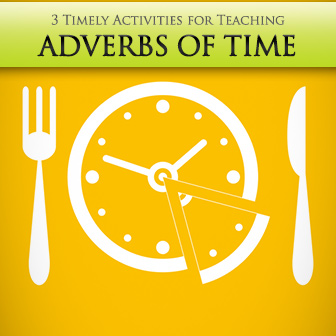How Often Do You...? 5 Advantageous Tips to Introducing Adverbs of Frequency


Utilize these three activities to keep students in line with time.
The topic of time includes adverbs that answer the questions when, how long, and how often. Students usually learn frequency first followed by when and how long. The grammar of introducing each of the categories should include instructions about word placement, meaning, and specific examples. Adverbs of frequency, for example, generally come before an action verb and after the verb to be. For example: I always eat lunch at 12:00 vs. I am never late to appointments. For adverbs that answer the question when, often the word placement can change the meaning of the sentence slightly. For example: Later, I will give the baby a bath. vs. I will give the baby a bath later. In the first sentence the emphasis is upon the when, and in the second sentence the when is more neutral. Generally words that answer the question when can be placed at the beginning or at the end of the sentence. They are rarely placed in the middle as it just sounds awkward. Adverbs that answer the question how long, like since 1982 or for an hour have an important distinction; students need to learn the difference between using since and using for. Since is followed by a point in time whereas for is followed by a duration. For example: I have been a nanny for ten years vs. I have been a nanny since 2003.
All of these points of expressing time and timing need to be practiced and reviewed fairly often. There are a lot of fill in the blank exercises in grammar books, but you can also do interactive exercises to create more natural language.

Card games can be used in a variety of ways to practice adverbs of time. You can adapt them for varied levels and increase the difficulty for intermediate and advanced learners. All you have to do to vary the games is to change up what is on the cards, how many cards each students receives, and the tenses that will be practiced. Make cards for each set of adverbs of time. The sets should include those for adverbs that answer the questions when, how often, and how long.
Examples of adverbs that answer when are: today, yesterday, last year, a month ago, two weeks ago, etc.
Examples of adverbs that answer how often are: rarely, frequently, regularly, weekly, often, never, etc.
Examples for those adverbs that answer for how long are: 3 hours, not long, all day, since, etc.
Each student should draw a set number of cards. What follows next is up to you and the level of your class. You could simply have students make sentences in rounds using the words on their cards. Maybe they get three cards, and need to make one sentence with those three words. Or they only get one card, but they should give three examples using different tenses. Still another option is to have them build upon the sentence of the student that spoke before them. This can be done by creating a certain theme for sentences or ask them to try to continue a story of events. Whichever way you choose, card games focused on adverbs of time supply a good amount of practice in a lighthearted way.
Tic Tac Toe is a good, quick game you can employ to practice and review time expressions. You can make your Tic Tac Toe board as big as you like on the board and fill it with either expressions of time, verbs, or both. Decide which element of time you would like to focus on and tailor the vocabulary accordingly. Clearly state the objectives at the beginning of the game, and be sure to hold to the guidelines when allowing students to achieve their X or O. If students don't follow directions, give an incomplete or wrong answer, or if they take too long, they should not get to keep the square. Sometimes Tic Tac Toe can become boring if we don't challenge students. Give them several objectives they must meet to take their square.
When you are using multiple adverbs of time together they must be put together in a certain order.
To remember this order, teach your students LOW, and have them practice stringing time expressions together. For example:
John played soccer for three years(1) when he was young (3).
Tony worked regularly(2) last year (3).
There are quite a few activities you can organize using LOW.
One way to practice using LOW is to have students tell a story about their day, or recent or upcoming events that they can describe using past or future tenses. Challenge them to use certain tenses combined with adverbs of time in good order. You can also do exercises where you give them very basic information, and have them add in more complex details. You could start with something like, Emily went shopping. They then have to create the most complex sentence they can. This can de done in teams or pairs and can include written and spoken language. They might come up with something like: Emily went shopping at 2 p.m. everyday until last month when she didn't have any money left. Give points for creativity, each adverb of time included, and good tense usage. This activity is pretty simple to generate and you can practice multiple grammar points at the same time.
Apply these three activities in varied ways, and your students will arrive on time to every challenge.